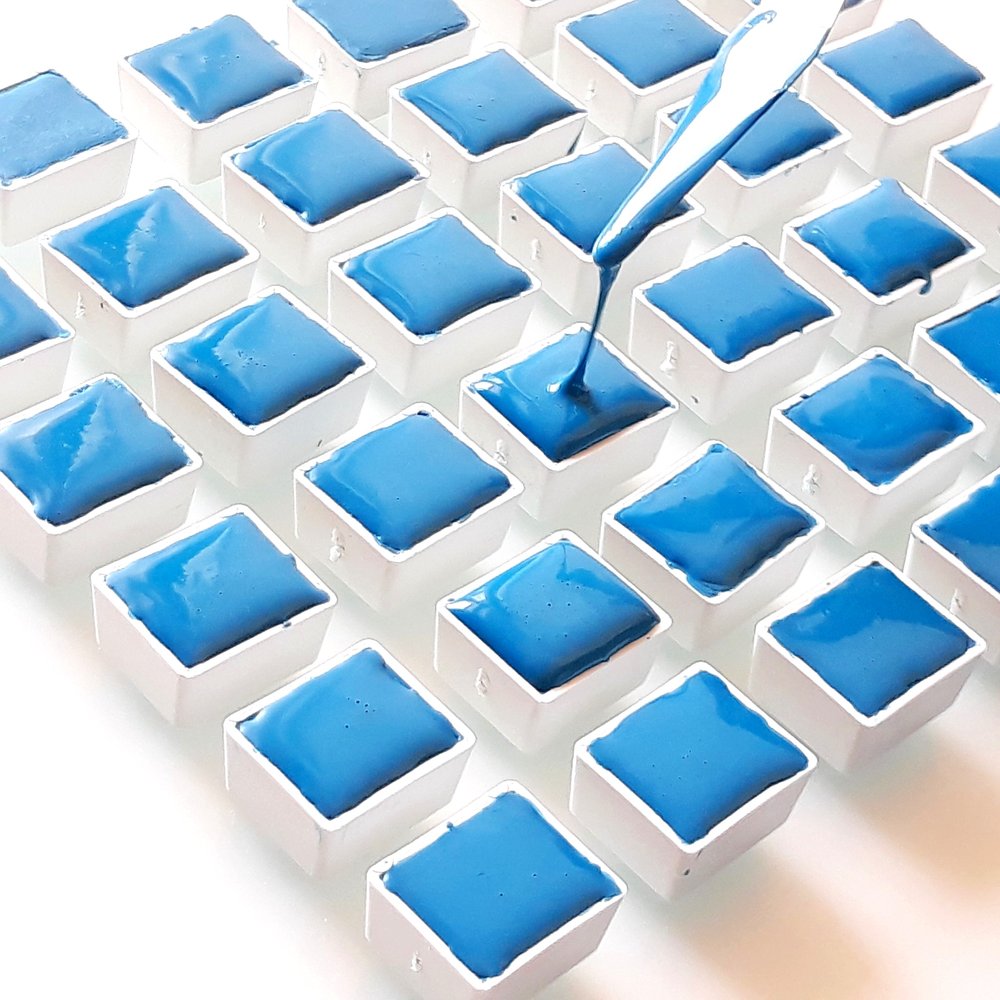
OUR UNIQUE HANDMADE PROCESS
Introductory text. Integer posuere erat a ante venenatis dapibus posuere velit aliquet. Maecenas faucibus mollis interdum. Aenean eu leo quam. Pellentesque ornare sem lacinia quam venenatis vestibulum. Cras justo odio, dapibus ac facilisis in, egestas eget quam.
01.
AN ARTISAN RECIPE
Our watercolors are crafted according to a traditional recipe of raw pigments, gum arabic, local honey and rosemary essential oil and mulled by hand on a glass slab. Honey is added to help the paints retain water and increase their longevity.
02.
MAKING PAINT STARTS WITH A BINDER
While vibrant pigments have the most obvious role in our watercolors, the medium or "binder" that suspends the paint is absolutely fundamental. Our binder is made from pure lumps of Kordafan gum arabic from the Acacia senegal tree. The raw gum crystals are dissolved in distilled water for 24-36 hours and then filtered by hand 2-3 times to remove any plant matter and impurities. The gum arabic solution is then mixed with a percentage of glycerin, a plasticizer, which prevents the cracking and chipping of dry paint. Honey is added as a humectant, and rosemary essential oil is also added for its natural antifungal property.
03.
MULLING THE PAINT
Pigment particles are dispersed through milling in the transparent binder. First, the two are combined using a palette knife. A dispersant, or wetting agent, helps facilitate the mixing of the pigment and water based binder. This stage of the process is particularly important (and laborious) for the finely divided or water repelling pigments.
Once united, the pigment and binder are milled on the slab with a glass muller. During this stage, the pigment particles are distributed evenly throughout the binder and the paint becomes homogenized and smooth.
04.
POURING THE PANS
Once mulled, the paint is transferred from the glass slab into a jar to rest, ensuring that the pigment is stabilized with the binder. Then, unlike commercially "extruded" paints, it is poured by hand into the pans which are refilled several times as they dry over the course of 4-5 weeks.
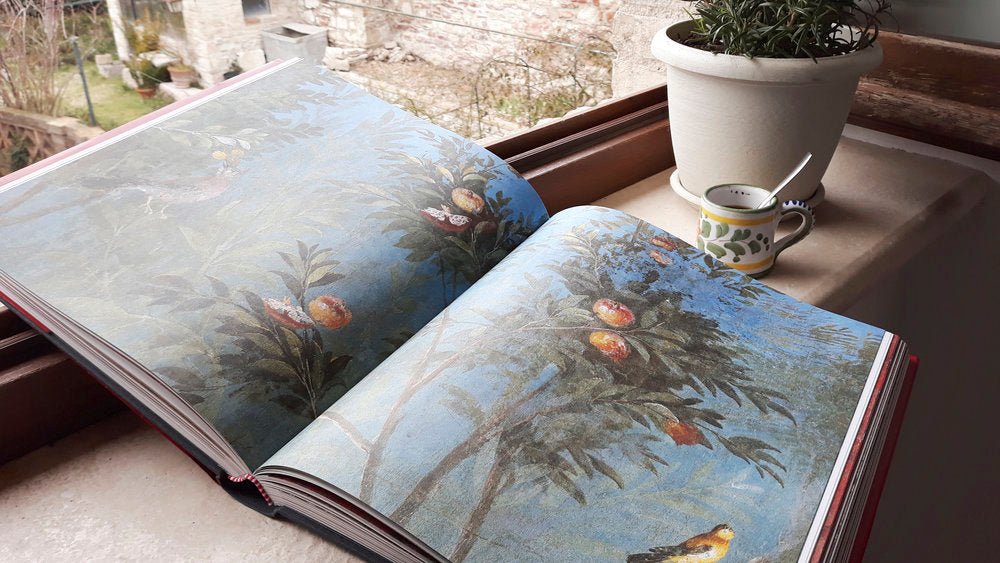
HISTORY OF PIGMENTS
Before the Industrial Revolution, most of the pigments used by artists were from earth and mineral sources, or had biological origin. Pigments from unusual sources such as plant matter, semi-precious stones, insects, and mollusks were harvested and traded across long distances.
Our collection of handmade watercolors are crafted with premium pigments that are carefully selected from both historical and contemporary sources, with the aspiration to connect users to materials that have been used by artists throughout the ages, as well as offer access to new cutting edge pigments.
HISTORICAL PIGMENTS

ULTRAMARINE
Ultramarinus, literally "beyond the sea" in Latin, was given its name because the pigment was imported into Europe from mines in Afghanistan and other countries in the Midlle -East by Italian traders during the 14th and 15th centuries. The original color was made by grinding the semi-precious lapis lazuli into a powder and formulating it into paint. The original recipe was recorded by Italian painter Cennino Cennini (1360-1427) in his book Il libro dell'arte, available today in translation.
Ultramarine was the finest and most expensive blue used by Renaissance painters. It was often used for the robes of the Virgin Mary, symbolizing holiness. It remained an extremely expensive pigment until a synthetic ultramarine was invented in 1826.

VERDERAME
Mostly imported from Greece, verderame, or verdirgris (vert-de-Grèce), was originally made by hanging copper plates over hot vinegar. The green crust that formed on the copper was scraped off and collected. A relatively transparent green blue pigment, verderame was used in the Middle Ages and Renaissance primarily for creating a deep, intense green by glazing or for obtaining green for foliage when mixed with lead-tin yellow. Over time, application of this pigment with water based mediums, has proved to be volatile and not lightfast, particularly in Western manuscripts. Persian painting schools of the time, however, discovered that the pigment could be stabilized by adding saffron to the paint recipe. In fact, today it has been confirmed through spectral analysis that the presence of saffron indeed improved the pH stability of the copper-based greens in Persian miniature paintings.
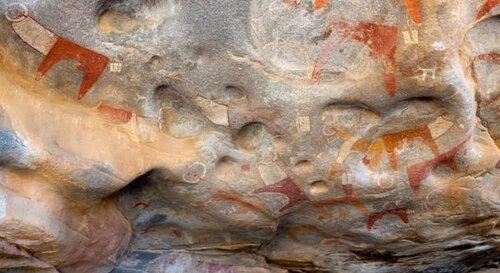
OCHRE
Ochre occurs naturally all over the world as earth pigments with a mixture of iron oxide and varying amounts of clay and silica. Yellow ochre owes its color to the presence of an iron oxyhydroxide mineral, goethite. And a reddish variant of ochre containing a large amount of hematite, or dehydrated iron oxide, is called red ochre. Ochres are among the oldest pigments used by man and have been discovered in prehistoric cave paintings. They are completely stable in all applications and completely lightfast.
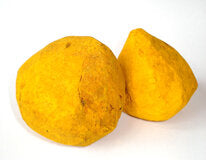
INDIAN YELLOW
Indian yellow, magnesium euxanthate, is said to have been manufactured in rural India from the urine of cattle fed only on mango leaves and water. The process is now considered inhumane and is no longer manufactured. In her book Color: A Natural History of the Palette, Victoria Finlay recounts her search in India to find the original villages where this color was made. While the exact location and original production method remain a mystery, her book is fascinating and worth a read.
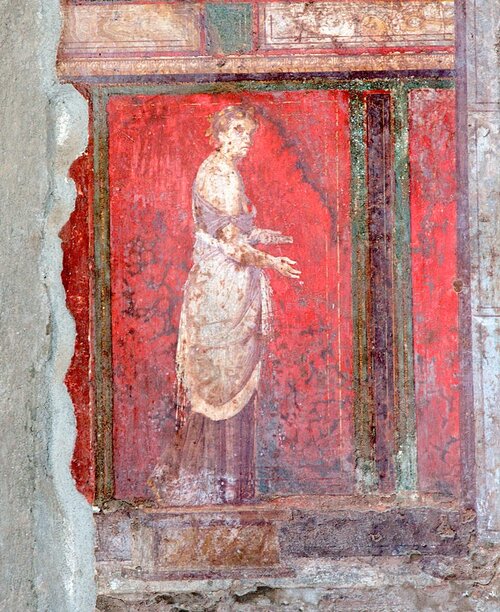
VERMILLION
Vermilion is a mercury sulfide mineral (cinnabar) used from antiquity through to the present. Made artificially from the 8th century (vermilion), it was the principle red in painting until the manufacture of its synthetic equivalent, cadmium red. In modern times, the use of traditional vermilion has been dramatically reduced due to its blackening reaction to hydrogen sulphides in the air and the dangerous toxicity of mercuric sulfide.

CARMINE
In Asia and Europe, the intense cool red kermes carmine was obtained from a wingless insect living on certain species of European live oaks and was one of the oldest most prized natural pigments. In the Americas, cochenille carmine was made from cactus eating cochenille insects and used by the Aztecs for dyeing and painting. It was brought to Europe in the sixteenth century following the Spanish conquest and became one of the most mysterious and wanted products in the world. In Mexico, the production of domestic cochenille and harvest of wild cochenille are still active today. Internationally the cochineal dye is used in many products, including lipstick and in cherry cola soda.

KORDOFAN GUM ARABIC: VEHICLE OF PURE COLOR
Gum arabic, also known as acacia gum, is a natural gum consisting of the hardened sap of various species of the acacia tree. Producers harvest the gum commercially from wild trees, mostly in Sudan (80%) and throughout the Sahel, from Senegal to Somalia—though it is historically cultivated in Arabia and West Asia. The sap has numerous applications, including as a stabilizer in foods and soft drinks, as well as an ingredient in medicines, glue, cosmetics and paint.
Our watercolor binder is made from pure lumps of Kordafan gum arabic from the Acacia senegal tree. We dissolve the raw gum pieces in distilled water for 24-36 hours and then filter the solution by hand 2-3 times to remove any plant matter and impurities.
CONTEMPORARY PIGMENTS

YLN MN BLUE
YInMn blue, an exclusive new bright blue pigment that achieves pure color tones that were previously inaccessible on the color wheel, dark blue between ultramarine blue and cobalt.
This mixed oxide pigment is made from the very expensive rare earth yttrium (Y), the extremely rare semi-metal indium (In) and manganese (Mn) and is the most recent of the big new pigment discoveries.
YInMn Blue (PB86) is the first inorganic blue in over 200 years. It was discovered by chemist Dr. Mas Subramanian and his team in 2009 at Oregon State University. Yln Mn blue has a rather complex chemical composition and is produced only in small quantities making it very precious.


